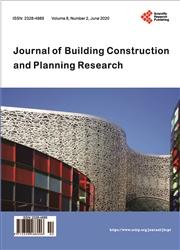Risk Assessment at the Design Phase of Construction Projects in Ghana
引用次数: 3
Abstract
The study was carried out exclusively in Ghana to explore the approaches employed by consultants in risk assessment at the design phase of projects in Ghana. One hundred and fourteen (114) consultants were selected out of a population of one hundred and eighty six (186) from three main professional associations in Ghana made up of the Ghana Institute of Architects, Ghana Institution of Engineers and the Ghana Institution of Surveyors (Quantity Surveying Division) practicing in Ghana for the study. Both primary and secondary data were collected. A descriptive survey was also used to observe and describe the presence, frequency or absence of characteristics of a phenomenon as it naturally occurred, in order to gain additional information. A questionnaire was also designed to collect data from the architects, engineers and quantity surveyors. The data was analyzed using Statistical Package for the Social Scientists (SPSS) 17.0. Descriptive and inferential statistics, such as frequency tables, percentages and cross tabulations were used in the data analysis and summaries. Simple tests of associations were undertaken by using Chi square and Cramer’s V statistics to compare relationships between variables. Again, relative importance index was also used to analyze some of the data by computing to deduce their rankings. The relative importance index was used to analyze some of the data by computing to deduce their rankings. The research revealed that majority of consultants had an average knowledge of risk management. Based on the findings it was recommended that consultants undergo advanced training in risk assessment. It was therefore suggested that consultancy firms should develop a set of laid down procedures for consultants to use in risk assessment in order that the use of intuition employed by majority is lessened. The challenges observed in risk assessment and the remedial steps suggested curtailing the detrimental effects of risks would be of wide importance to many developing economies.加纳建设项目设计阶段的风险评估
这项研究专门在加纳进行,目的是探讨顾问在加纳项目设计阶段进行风险评估时采用的方法。从加纳三个主要专业协会的一百八十六(186)人中挑选了一百一十四(114)名顾问进行研究,这些协会包括加纳建筑师学会、加纳工程师学会和在加纳执业的加纳测量师学会(工料测量处)。收集了主要和次要数据。还使用描述性调查来观察和描述自然发生的现象的特征的存在、频率或不存在,以获得更多信息。还设计了一份问卷,以收集建筑师、工程师和工料测量师的数据。使用社会科学家统计软件包(SPSS)17.0对数据进行分析。在数据分析和汇总中使用了描述性和推断性统计数据,如频率表、百分比和交叉表。通过使用卡方和克雷默V统计量来比较变量之间的关系,对关联进行了简单的测试。同样,相对重要性指数也被用来通过计算来分析一些数据,以推断它们的排名。相对重要性指数被用来通过计算来分析一些数据,以推断它们的排名。研究显示,大多数顾问对风险管理的了解一般。根据调查结果,建议顾问接受风险评估方面的高级培训。因此,有人建议,咨询公司应制定一套既定程序,供顾问在风险评估中使用,以减少大多数人使用直觉。在风险评估中观察到的挑战和所建议的减少风险有害影响的补救措施对许多发展中经济体具有广泛的重要性。
本文章由计算机程序翻译,如有差异,请以英文原文为准。
求助全文
约1分钟内获得全文
求助全文

 求助内容:
求助内容: 应助结果提醒方式:
应助结果提醒方式:


